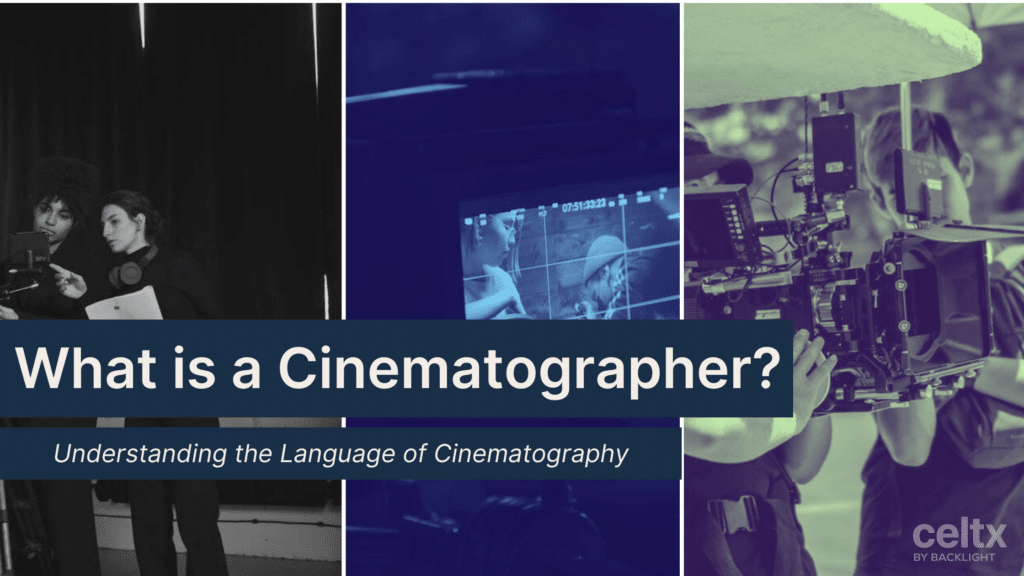
Responsible for shaping the visual storytelling of a movie, a cinematographer is one of the most important roles on a movie set. A skilled one can turn an ordinary script into a visually stunning masterpiece using lighting, composition, and camera techniques.
Unfortunately, a cinematographer’s contribution can sometimes be overlooked by audiences, and here at Celtx, we’re determined to change that!
But what does a cinematographer do? Whether you’re an aspiring filmmaker or simply curious about a cinematographer’s role, today’s blog is for you! We’ll break down the cinematographer definition, how they work, and how you can become one.
Lights, camera, action!
Table of Contents:
- What Is a Cinematographer?
- The Role of a Cinematographer in Film Production
- Cinematographer Vs. Director of Photography
- Key Responsibilities of a Cinematographer
- Essential Cinematography Techniques
- Famous Cinematographers & Their Signature Styles
- How to Become a Cinematographer
- Conclusion
What Is a Cinematographer?
Also known as a Director of Photography (DP), a cinematographer is responsible for capturing the visual essence of a film. They collaborate with many departments to bring the script to life with lighting, camera movement, composition, and color. In short, they set the film’s mood and tone.
Cinematography is both an art and a science; while creativity and an eye for aesthetics are crucial, technical expertise is equally important. A cinematographer must understand how different cameras, lenses, and lighting setups affect each camera shot to ensure the final product aligns with the director’s vision.
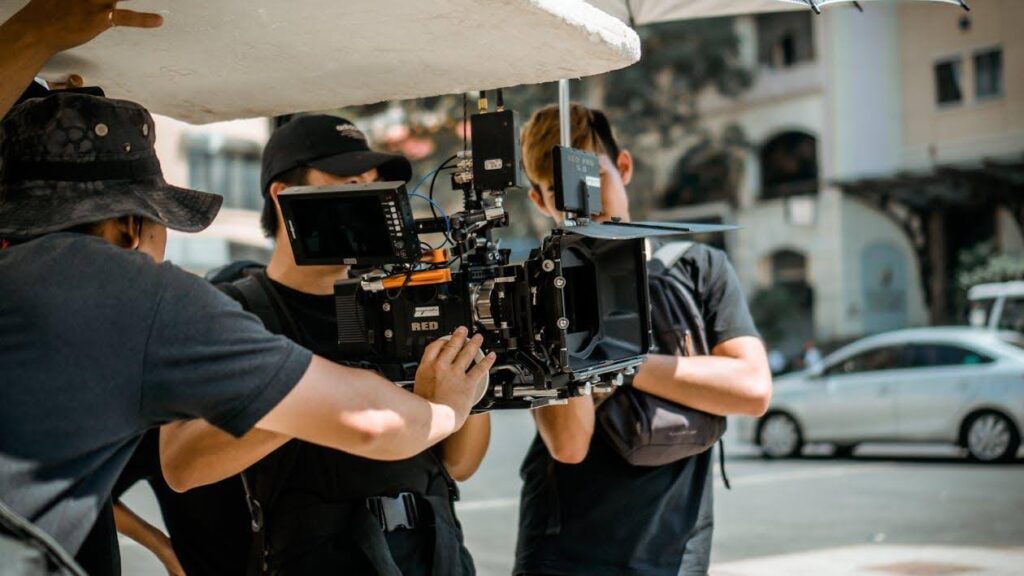
The Role of a Cinematographer in Film Production
Talking of the director, how does a cinematographer fit into their production team? Well, while the director oversees the entirety of a movie’s production, the cinematographer focuses solely on the visual aspects of storytelling.
Their input starts in pre-production, where they collaborate with the director and production designer to establish the film’s visual tone. Then, during production, they’ll oversee lighting and camera crews, making real-time decisions about exposure, framing, and movement.
Finally, in post-production, they may work with colorists to fine-tune the final look of the film.
So, if the cinematographer oversees the visuals of the film, what’s the difference between a cinematographer and a director? Well, we have a blog for that!
Cinematographer vs. Director of Photography
You’ve already seen us mention ‘Director of Photography’ and may wonder if that and the term ‘Cinematographer’ are used interchangeably. The answer is, they are! However…
In some cases, a cinematographer may refer to someone who operates the camera, while the DP oversees the entire camera and lighting crew. You’ll find in most professional settings, that the DP is the head of the cinematography department and is responsible for the film’s overall visual style. Camera work will then be delegated to a camera operator.
On the other hand, in smaller productions the cinematographer might take on multiple roles, including operating the camera.

Turn your vision into reality with Celtx’s all-in-one film production tools.
Key Responsibilities of a Cinematographer
A cinematographer’s work extends beyond the camera. Like many other roles on a film set, they are required to multi-task and be involved in many different aspects of a production.
Let’s take a look at some of the key responsibilities of a cinematographer:
- Collaborating with the director on the movie’s visual style.
- Planning and executing lighting setups for each scene.
- Selecting camera angles, lenses, and movements.
- Directing the camera crews and gaffers.
- Ensuring consistency in visual storytelling.
- Managing the film’s color grading and exposure settings.
- Experimenting with innovative techniques to enhance visual impact.
Each of these responsibilities needs a cinematographer to have a deep understanding of both artistic principles and technical execution.
It is also important to remember that all these responsibilities will be strictly guided by the movie’s budget, location and time constraints. The challenge is to work within these while maintaining high visual quality.
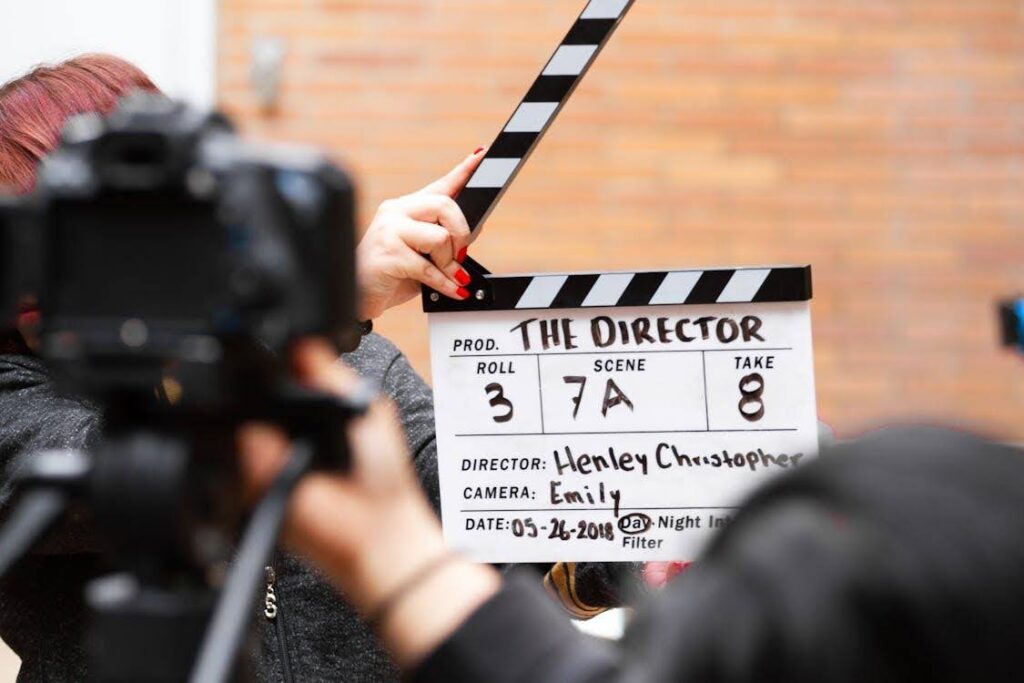
Essential Cinematography Techniques
Lighting, composition, and camera movement are three of the key areas of cinematography. Let’s see exactly how cinematographers use them to create some of the best movie aesthetics.
Lighting
Three-Point Lighting
A fundamental lighting technique that uses a trio of lights: a key light, fill light, and backlight to create depth and dimension.
Natural vs. Artificial Lighting
Depending on the intended visual impact of a shot, natural light (like sunlight) can provide a realistic and organic look, while artificial lighting setups allow for more control over brightness and shadows.
High Key vs. Low Key Lighting
High key lighting is bright and minimizes shadows, often used in comedies and commercials. In contrast, low key lighting is ideal for a moody and dramatic effect, using stark contrast and shadows.
Silhouette Lighting
Often used in mystery and suspense, a subject is placed against a strong backlight with minimal front lighting to create a striking outline of the subject.
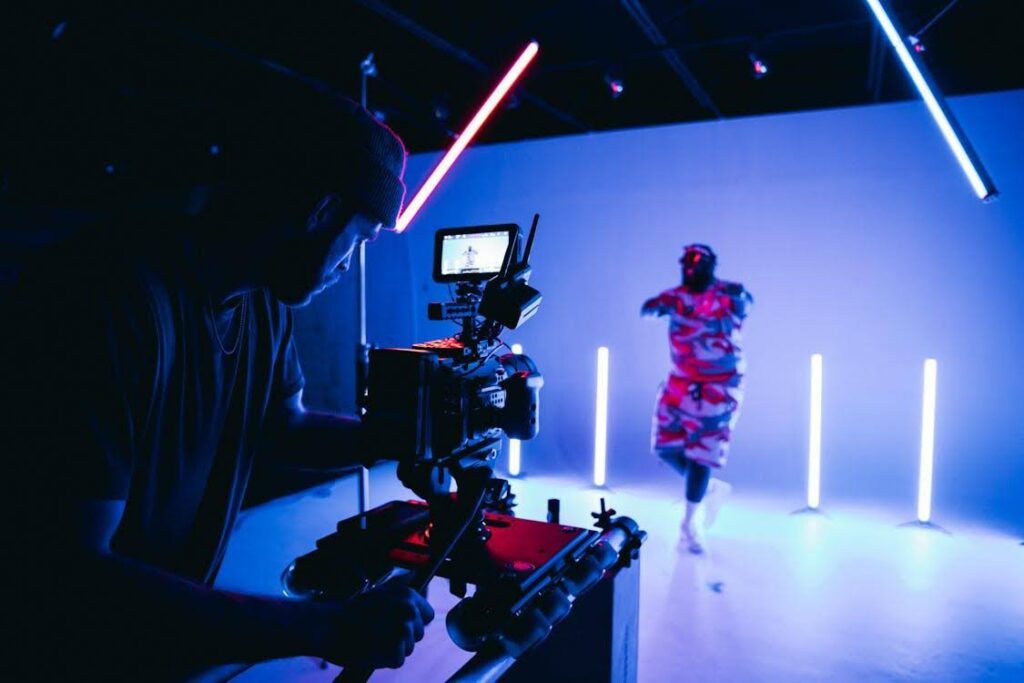
Practical Lighting
This incorporates real, on-set light sources such as lamps, candles, or neon signs for a natural look, blending seamlessly into the scene.
Rembrandt Lighting
A classic technique that creates a small triangle of light on the subject’s cheek, often used in portraits and dramatic scenes.
Chiaroscuro Lighting
This method is inspired by Renaissance paintings and emphasizes strong contrasts between light and shadow to evoke intensity and depth.
Color Lighting
Colored gels or LED lights are used to manipulate the emotional tone of a scene, for example, red for danger, or blue for melancholy.
Effortlessly plan your shoot with shot lists and scheduling tools in Celtx.
Get started now.
Composition
This involves arranging elements within the frame to create visually appealing and meaningful images. Just think of painting a picture, but with physical objects and subjects.
Rule of Thirds
Here, the frame is divided into nine equal sections, with key elements placed along the lines or intersections. This ensures a balanced composition.
Leading Lines
Using natural or artificial lines, like roads, fences, or light beams, to guide the audience’s eyes towards the subject.
Depth of Field
A cinematographer controls the focus either to emphasize the subject while blurring the background (shallow depth of field) or keep the entire scene in focus (deep depth of field).
Negative Space
Empty spaces are left around the subject to create balance, isolation, or a sense of minimalism.
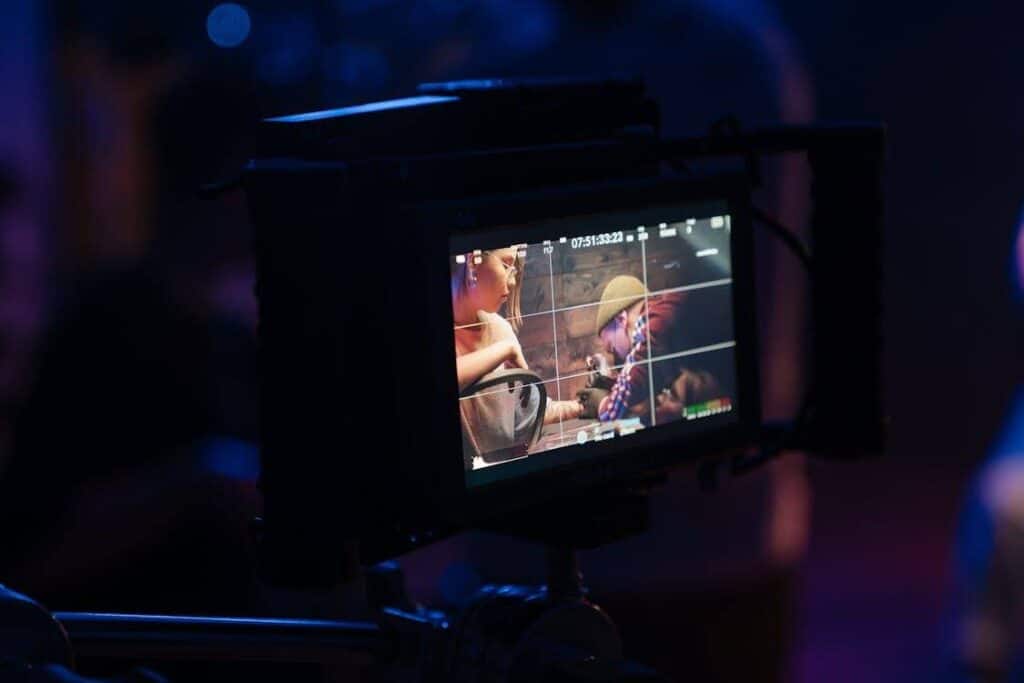
Symmetry and Asymmetry
Symmetry provides a sense of order and perfection to a shot while asymmetry adds dynamism and tension.
Framing Within a Frame
Using objects like windows, doorways, or natural formations to create a secondary frame within the shot, drawing further attention to the subject.
Dutch Angle (Tilted Shot)
Here, the camera is tilted to create a sense of unease or instability. This technique is most commonly used in thriller and action movies.
Golden Ratio and Fibonacci Spiral
A more advanced compositional technique that uses specific mathematical ratios to create aesthetically pleasing images on screen.
For more on lighting, check out our ultimate guide here, covering all the basics.
Camera Movements
Once the lighting and composition of a shot have been finalized, it’s time to focus on camera movement. These techniques directly influence how an audience perceives action and emotion.
Tracking Shots
The camera moves alongside a subject to create a sense of movement and immersion.
Handheld vs. Steadicam
Often used in documentaries and action scenes, handheld shots are where the camera is held freehand, creating a raw, realistic feel.
Steadicam provides smooth, floating movements, creating elegance in a scene.
Dolly Zoom (Vertigo Effect)
Zooming in while physically moving the camera back (or vice versa) to create a surreal distortion of perspective.

Crane Shots
A crane moves the camera vertically or in sweeping motions to capture grand, cinematic shots.
Slow Motion and Time Lapse
The perception of time is manipulated as the camera slows down or speeds up action to emphasize details or a passage of time.
Related Reading: What Does a Director Do? The Ultimate Guide
Whip Pan
A rapid horizontal camera movement that creates a blur effect, often used for quick transitions or dynamic action.
Overhead Shots (Bird’s Eye View)
The camera is positioned directly above the subject to provide a unique, often abstract perspective.
Point of View Shots (POV)
Placing the camera in a character’s perspective to immerse the audience in their experience.
Gimbal and Drone Cinematography
Uses stabilizing equipment and aerial drones to achieve smooth, dynamic shots in difficult locations.
Famous Cinematographers & Their Signature Styles
You may say that you can’t name any notable cinematographers, but you’ll sure know their work. Now it’s time for us to name names and shine a light on some of the film industry’s most masterful cinematographers, who have all had a profound affect on how movies are made.
Case Study #1 | Roger Deakins
Known for his use of natural light, impeccable composition, and mastery of color grading, Deakins’ work on 1917 showcased his ability to create seamless one-shot sequences. It earned him an Academy Award and BAFTA in 2020 for Best Cinematography For Blade Runner 2049, he also demonstrated his innovative approach to futuristic neon lighting and deep contrast.

Check out his top tips for lighting in this video from StudioBinder:
Case Study #2 | Rachel Morrison
Morrison also uses naturalistic lighting as well as emotional realism. Her work on Mudbound was nominated for the Best Cinematography Academy Award in 2018 and featured warm, earthy tones to capture the historical context and emotional weight of the story.
In Black Panther, she blended traditional African aesthetics with modern cinematic techniques to create a visually rich and immersive world.
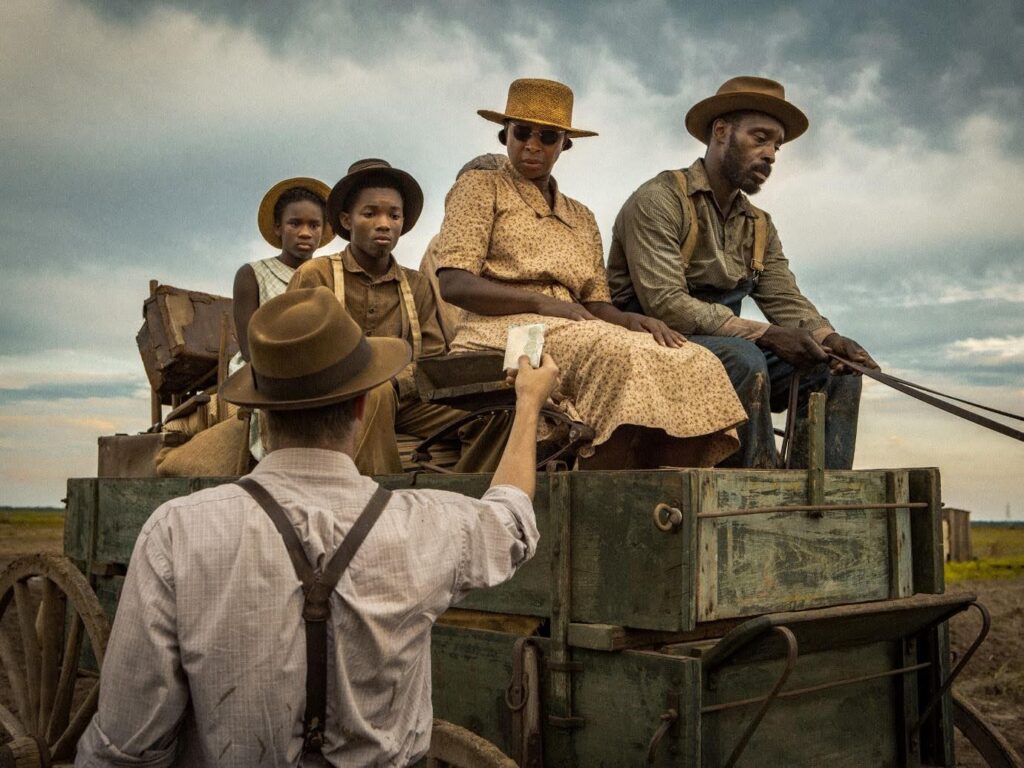
Storyboarding made simple — visualize your shots before the camera starts rolling
with Celtx free storyboard templates.
Start your free trial now.
Case Study #3 | Robert Richardson
A collaborator of Quentin Tarantino’s in Kill Bill, Richardson has earned a fantastic reputation for high-contrast lighting and dramatic use of color. Kill Bill featured stark lighting shifts and dynamic compositions.
Richardson also worked on The Aviator, paying homage to early Technicolor cinematography, using period-accurate lighting techniques. It was so successful, that it won the Academy Award for Best Cinematography in 2005.
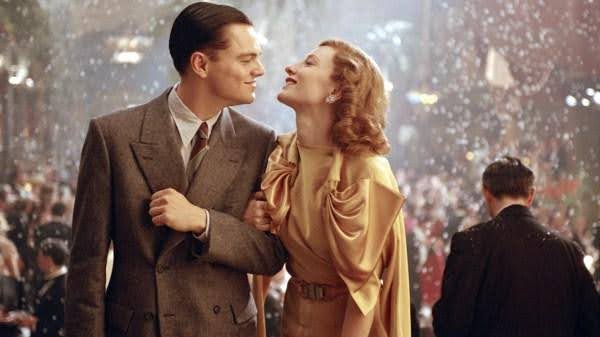
For more on how to be a killer cinematographer, check out The Wandering DP’s top tips right here.
How to Become a Cinematographer
If all of this sounds right up your alley, then there are some key steps you’ll need to take. While this is a guide, everyone’s journey into the industry is different, so don’t be disheartened if your path isn’t the same as other aspiring cinematographers.
1. Learn the Fundamentals
Make sure you’re familiar with the basics of cinematography. Books, courses and tutorials are your best friend!
Understanding the principles of lighting, camera operation, framing, and composition is crucial! We highly recommend Cinematography: Theory and Practice by Blain Brown as a great starting point. You can supplement your reading with online platforms like Masterclass or Coursera who offer valuable insights into the filmmaking craft.
2. Gain Firsthand Experience
Practical experience is key to mastering the theory you’ve been studying. Seek work on student films, indie projects, and internships as a production assistant or camera trainee.
This experience will provide exposure to real-world production workflows and professional equipment to help you refine your technical skills.
3. Build a Portfolio
Showcase your best work in a reel to demonstrate your skills. It should highlight a variety of shots, including well-composed frames, dynamic lighting, and smooth camera movement.
Choose the absolute best clips that reflect your ability to tell a visual story – quality over quantity.
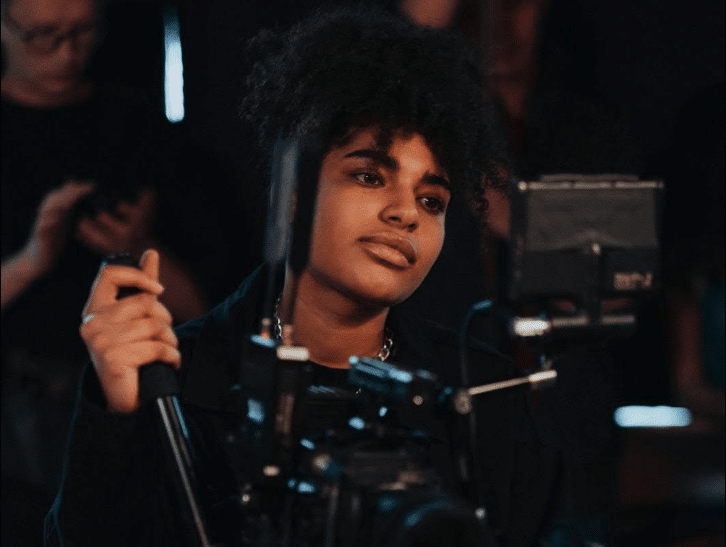
4. Network with Industry Professionals
Connect with directors, producers and other cinematographers by attending film festivals and other industry events. Also be sure to join professional organizations like the American Society of Cinematographers (ASC).
You can even join societies and communities online which can open doors to job opportunities. By developing relationships with your peers, you can collaborate on projects and support each other as you grow in your careers.
5. Master Camera and Lighting Equipment
Familiarize yourself with different camera systems (like ARRI, Red, and Sony) and lighting setups. This also includes lenses, color grading, and post-production processes.
6. Never Stop Learning
While general cinematography skills are vital, some cinematographers specialize in areas such as documentaries, commercials, or narrative filmmaking. Find your niche, and make sure to keep honing your craft. You want to stay competitive in the industry!
Conclusion
Well, there we have it – the cinematographer!
Their role is the backbone of visual storytelling in film, bringing a director’s vision to life through lighting, composition, and camera movement.
A skilled cinematographer transforms ordinary scenes into breathtaking visuals that evoke emotion and depth. From mastering essential techniques to studying the work of industry legends, aspiring cinematographers must continuously refine their craft.
Whether you’re drawn to documentaries, commercials, or feature films, persistence and passion are key to success. By gaining firsthand experience, building a strong portfolio, and networking with professionals, you can carve out a rewarding career in cinematography and help shape the future of filmmaking.
Take your cinematography to the next level with intuitive production planning.
Explore Celtx today.
Enjoyed this article? You might like these, too:
- Beyond the Set: Exploring Different Jobs in the Film Industry
- How to Become a Producer in Film and TV
- Film Budgeting: Tips for Every Production Scale
